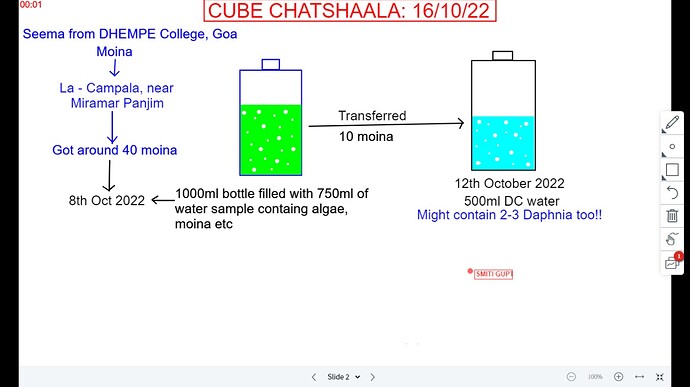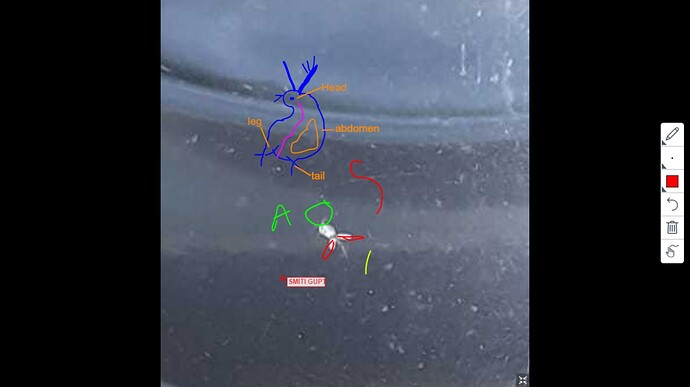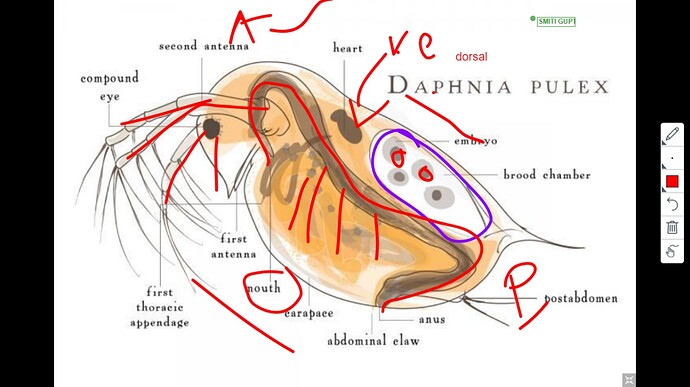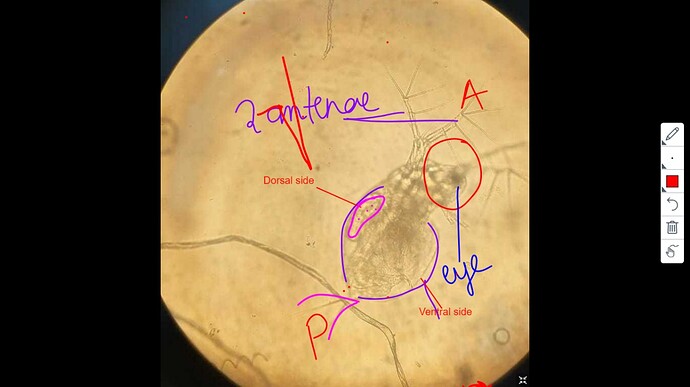![]() Today we discussed about moina that seema found in La - Campala lake near Miramar, Panjim
Today we discussed about moina that seema found in La - Campala lake near Miramar, Panjim
![]() On 8th October seema got water sample from that lake in a 1L bottle, it was 750ml of green color water
On 8th October seema got water sample from that lake in a 1L bottle, it was 750ml of green color water
![]() It was green in color due to presence of algae
It was green in color due to presence of algae
![]() In that 750ml water seema got around 40 moina with some other organism
In that 750ml water seema got around 40 moina with some other organism
![]() On 12th October @_Seema_11 transferred 10 moina in another bottle containing dechlorinated water and she suspect there there will be 2-3 daphnia there in that bottle too.
On 12th October @_Seema_11 transferred 10 moina in another bottle containing dechlorinated water and she suspect there there will be 2-3 daphnia there in that bottle too.
![]() To clarify and differentiate between moina and daphnia we tried to identify them…
To clarify and differentiate between moina and daphnia we tried to identify them…
![]() We discussed all about the body parts and their position
We discussed all about the body parts and their position
![]() What is anterior, posterior, dorsal and ventral side of daphnia then in moina
What is anterior, posterior, dorsal and ventral side of daphnia then in moina
![]() Here we had a good discussion as seema and me had totally contrasting view on it but ya…
Here we had a good discussion as seema and me had totally contrasting view on it but ya… ![]()
![]() At the end we came to an conclusion that it could be another water organism like Copecod
At the end we came to an conclusion that it could be another water organism like Copecod
![]() Copepod - Wikipedia
Copepod - Wikipedia
![]() Reference on daphnia, shares during ChatShaala discussion
Reference on daphnia, shares during ChatShaala discussion
![]() The heart is at the top of the back, just behind the head, and the average heart rate is about 180 bpm under normal conditions.
The heart is at the top of the back, just behind the head, and the average heart rate is about 180 bpm under normal conditions.
![]() Daphnia - Wikipedia
Daphnia - Wikipedia
![]() This tells us that heart of daphnia is on back side so that side would be dorsal and the side where daphnia’s face is there it’s ventral
This tells us that heart of daphnia is on back side so that side would be dorsal and the side where daphnia’s face is there it’s ventral
![]() At the end we had a look at picture of moina from Seema’s culture and compared it with daphnia
At the end we had a look at picture of moina from Seema’s culture and compared it with daphnia
![]() Also I thought the light black antenna like structure on lower side on eye side is shadow of 1 antenna that is clearly visible
Also I thought the light black antenna like structure on lower side on eye side is shadow of 1 antenna that is clearly visible
![]() But then we noticed that on top it’s just 1 antenna with 2 branch and below one is another antenna and not the shadow
But then we noticed that on top it’s just 1 antenna with 2 branch and below one is another antenna and not the shadow
What other organism seema might have in her water sample?
![]() There’s a lot to explore!.. Thanks to seema that she noticed such tiny things and made us think and question
There’s a lot to explore!.. Thanks to seema that she noticed such tiny things and made us think and question




